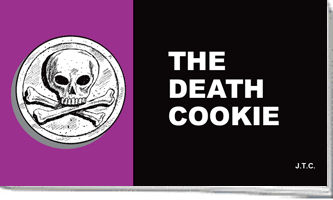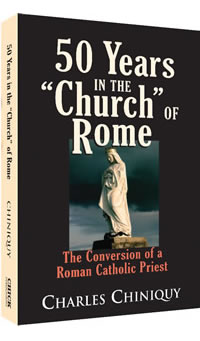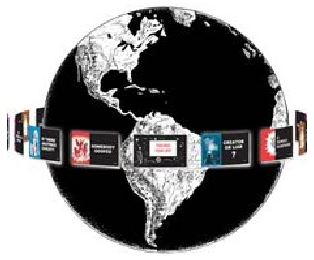Pope Insists that the Wafer Really is Jesus
- Issue Date: September/October 2003
Pope John Paul II used the Thursday before Easter to remind the world that the doctrine of the real presence of Christ in the Eucharist is not negotiable. In fact, his new encyclical on the subject begins: "The Church draws her life from the Eucharist."
Later, he quotes the Second Vatican Council that the Eucharistic sacrifice is "the source and summit of the Christian life."
It is difficult, at first, for the born-again Bible believer to fully understand why a simple celebration of what he calls "communion" can be so vital to the very life of what he has been told is just another Christian denomination with somewhat different "worship tradition." At first, he may miss the term, "real presence" because the definition is so unthinkable.
"You are telling me that this wheat wafer is actually human flesh?!" he may exclaim. But... but, it looks and feels like just a wafer!"
The pope insists by quoting the Council of Trent: "the consecration of the bread and wine effects the change of the whole substance of the bread into the substance of the body of Christ our Lord, and of the substance of the wine into his blood. And the holy Catholic Church has fittingly and properly called this change transubstantiation."
Charles Chiniquy, in his book, 50 Years in the Church of Rome, describes how he felt, as an ordained priest, about performing this magic: "To make one's self believe that he can convert a piece of bread into God requires such a supreme effort of the will, and complete annihilation of intelligence, that the state of the soul, after the effort is over, is more like death than life."
Apparently many Roman Catholics also have a problem believing this monstrous, medieval superstition. In a 1997 poll of practicing Catholics in the Diocese of Rochester, N.Y., only 35 percent believed in the "Real Presence." An earlier N.Y. Times CBS study found that most thought of the bread and wine as simply "symbolic reminders."
This perversion of Christ's object lesson at the last supper is the foundation for most of the spiritual bondage of Roman Catholicism. To "receive Christ" is to receive the wafer god on your tongue. Only an ordained priest can "consecrate" the wafer: turn it into Jesus.
Before the Catholic is clear to receive it, he must go to confession to have his sins forgiven. Only the priest can provide this "absolution" (forgiveness).
Anyone who neglects to obtain forgiveness from the priest, and avoids receiving Jesus in the Eucharist, is in danger of losing God's grace (favor) and, thus, his salvation.
If he has the misfortune of dying while out of grace, he is consigned to hell. But, if he dies in grace, he must visit purgatory to be punished for the part of his sins that, somehow, remained unforgiven. To get out of purgatory, more Mass rituals, re-sacrificing Jesus, must be performed, paid for by his relatives.
Chiniquy concludes: "When, with the light of the gospel in hand, the Christian goes into those horrible recesses of superstition, folly, and impiety, he can hardly believe his eyes and ears."
With 50 million Roman Catholics in the U.S. and one billion world wide, how heavy is the burden on the dedicated soul winners to share the simple truth of the gospel, that they might be made free from this pagan-based bondage.
For more information on the differences between Catholics and Protestants, read "Answers to my Catholic Friends."
- See more articles on related topics:
- Catholicism
- Eucharist
- Catholic Doctrine vs Scripture
Other Articles from September/October 2003:
- Barna Study Finds Most Church Members
Ignorant of Christian Basics
- This Foreign Missionary Works in Downtown Toronto
- New Soul-Winning Film Nearly Ready
- Soul Winners Spook Satan on Halloween
- Chick Mail Bag Sep-2003
- How Did God Preserve His Words to this Day?
- Prison Ministry Letters: Sep-2003
- U.S. Supreme Court Strikes Down Sodomy Laws
- Tract Passing Tips - September 2003
More on Catholicism:
Products of Interest:

Death Cookie, The
Introduces Catholics to the real Bread of Life, Jesus Christ.-

50 Years in the Church of Rome
368 pages
This classic work shows how this priest began to question Catholic teachings until he became saved, and led his entire parish to salvation. -

Answers To My Catholic Friends
64 pages
A gentle witness you can give Catholics that deals with venerating images, purgatory, where popes go when they die, and more.



